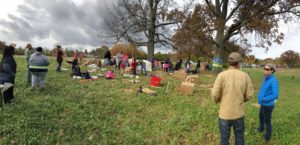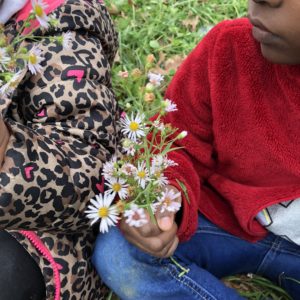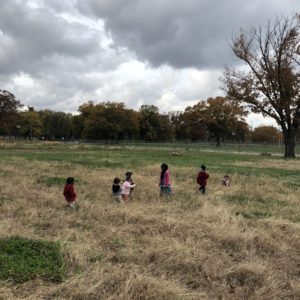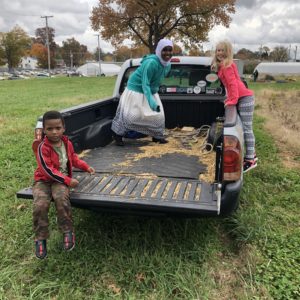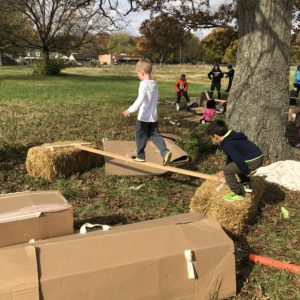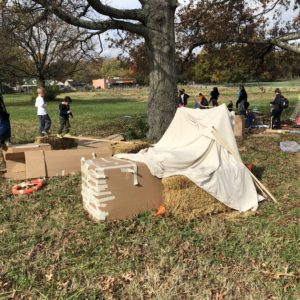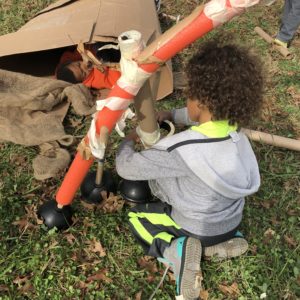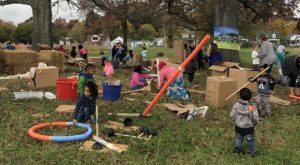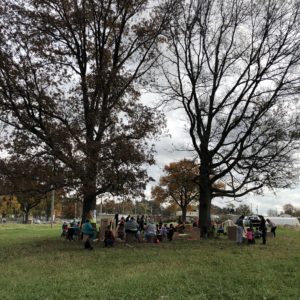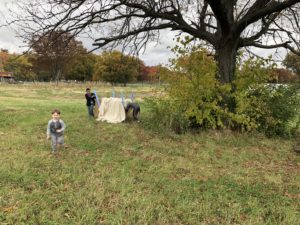Seeing is Believing
The Children at Play Network’s Seeds for Urban Play project allows us to work with organizations interested in bringing more outdoor free play to urban children. Free play supports healthy child development in many different ways but until free play is a regular part of growing up in urban communities we won’t realize those benefits. That’s why it is critical to approach the challenge through LOTS of cooperation.
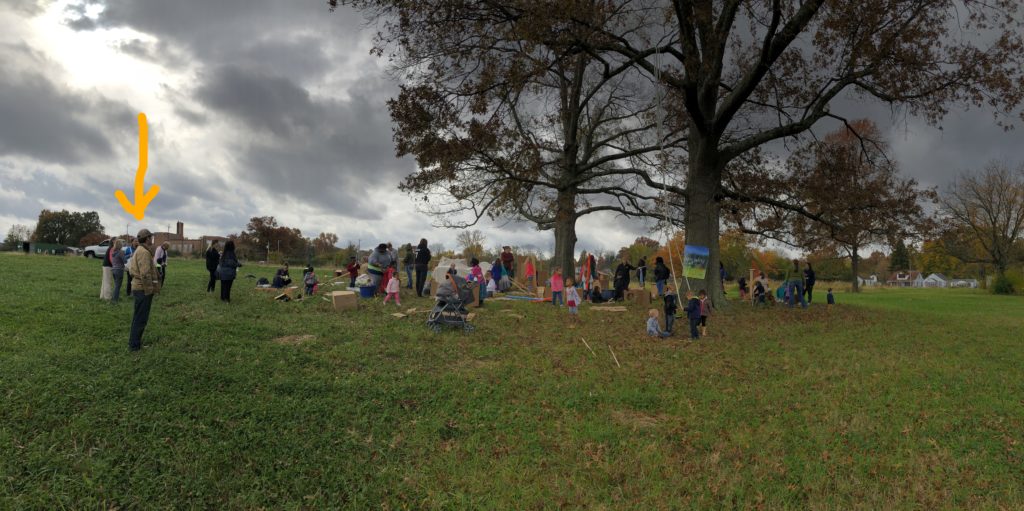 At a recent play day with our SEEDS partners, hosted at the Food Literacy Project’s – Iroquois Farms, we were joined by Matt Spalding with the Louisville Olmsted Parks Conservancy. Matt will soon be taking on the education and volunteer manager position there. After a few coffee shop chats about the Conservancy’s interest in bringing free play to some of the Olmsted Parks in Louisville, Matt joined us for a play day to see things in action for himself. The following questions are direct from Matt. (By the way…in the photo above that’s Matt under the yellow arrow.)
At a recent play day with our SEEDS partners, hosted at the Food Literacy Project’s – Iroquois Farms, we were joined by Matt Spalding with the Louisville Olmsted Parks Conservancy. Matt will soon be taking on the education and volunteer manager position there. After a few coffee shop chats about the Conservancy’s interest in bringing free play to some of the Olmsted Parks in Louisville, Matt joined us for a play day to see things in action for himself. The following questions are direct from Matt. (By the way…in the photo above that’s Matt under the yellow arrow.)
Matt: I was really struck by the collaborative nature of setting this particular event up: Bernheim, Children at Play Network, Food Literacy Project, Choosewell, New Directions, a pediatrician, a daycare, JCPS all had a hand in making the day a success. Have your urban free play events all been this much of a group effort? Does the planning become more challenging when more entities are involved?
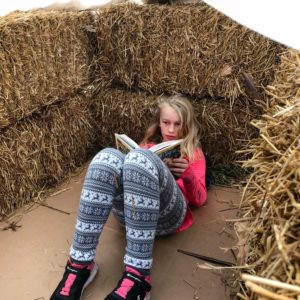 Claude [CAPN Director]: Each play day is its’ own beast. Each unfolds as a unique combination of place, people, weather, loose parts, and magic. The play day you observed went particularly well but many of them do. Over time our intent is to get more and more organizations involved working together. The CAPN isn’t about doing this work alone. We welcome the complexity of many organizations working together along with the extra communication and planning that involves. The more we work together the easier this will all become. They don’t always include so many different organizations but we think it’s progress when they do.
Claude [CAPN Director]: Each play day is its’ own beast. Each unfolds as a unique combination of place, people, weather, loose parts, and magic. The play day you observed went particularly well but many of them do. Over time our intent is to get more and more organizations involved working together. The CAPN isn’t about doing this work alone. We welcome the complexity of many organizations working together along with the extra communication and planning that involves. The more we work together the easier this will all become. They don’t always include so many different organizations but we think it’s progress when they do.
Matt: I loved what a “beautiful mess” the loose parts became. At the beginning there were fairly neat segregated piles of different materials, but 20 minutes in, the parts had all commingled and stayed that way for the duration.
Claude: Letting go of control and being accepting of “beautiful mess” (I like that phrase Matt) requires practice. The child aesthetic is not the adult aesthetic nor should it be. Setting up the loose parts for a play day is part chance and part planning. The idea is to make the materials both approachable and usable by the children. We want them to see the items provided as theirs. We never put anything precious into the mix. If it’s there, it’s for them. When a child is using an ENTIRE roll of tape to accomplish a task we don’t worry about that or interfere. It gets messy quickly. At the end of the day it’s much easier to clean up than one might think.
Matt: I see that one of the biggest challenges must be the subtle art of intervening with adults who are too involved with the child’s safety, play habits, sharing etc. Clearly that is one of skills I will need to work on…
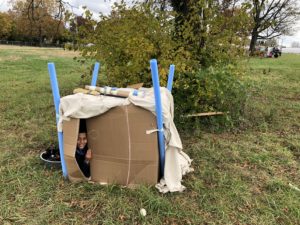 Claude: Most of the work during a free play day involves the art of gently removing adults from the arena of play. When you see two play facilitators whispering to each other on the outskirts of play, the odds are the conversation revolves around how to disentangle the adults. Most adults, and dad’s seem to be the worst, want to be right on top of the action. Mostly they want the children to be safe. But children mostly ARE safe. We put up a swing at this play day. Almost always a well meaning adult stations by the swing to make sure the children line up and take fair turns. We would turn that over to the children entirely. If a child isn’t getting a fair shot at the swing, learning to advocate for themselves is a far better lesson than learning to swing the same amount of swings as the last and the next child. Rough and tumble play also seems to pull in the adults. Play facilitators like to see rough and tumble play. That’s how children establish knowledge about boundaries, cooperation, fairness, personal space, and much more. So…once you are hosting these on your own Matt, good luck with the adults. The kids will be just fine.
Claude: Most of the work during a free play day involves the art of gently removing adults from the arena of play. When you see two play facilitators whispering to each other on the outskirts of play, the odds are the conversation revolves around how to disentangle the adults. Most adults, and dad’s seem to be the worst, want to be right on top of the action. Mostly they want the children to be safe. But children mostly ARE safe. We put up a swing at this play day. Almost always a well meaning adult stations by the swing to make sure the children line up and take fair turns. We would turn that over to the children entirely. If a child isn’t getting a fair shot at the swing, learning to advocate for themselves is a far better lesson than learning to swing the same amount of swings as the last and the next child. Rough and tumble play also seems to pull in the adults. Play facilitators like to see rough and tumble play. That’s how children establish knowledge about boundaries, cooperation, fairness, personal space, and much more. So…once you are hosting these on your own Matt, good luck with the adults. The kids will be just fine.
Matt: Relating this event to potential future events in our smaller neighborhood parks, I wonder how well a free play space works when it is adjacent to a traditional playground; do children freely go back and forth? Would both spaces function better totally separated?
Claude: Setting up a play day on a traditional playground near traditional fixed equipment (slides, swings, climbing structures, monkey bars, etc.) isn’t a problem. When the children first arrive they will likely gravitate toward the fixed equipment because that’s what is familiar to them. But it won’t be long, ten minutes max, that a few will start to explore the loose parts. Then it’s game over for the traditional play equipment. Loose parts wins out every time. They may use the fixed equipment as props for tent building or something like that but in general the loose parts is where the fun is. In part that’s because children can assert their will over loose parts. They can turn them into what they need them to be. A swing is just a swing.
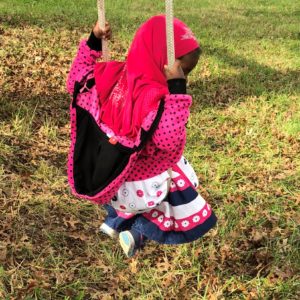 Matt: I came away from this observation very optimistic. Logistically, we can set free play into motion no problem. We’ve got trailers, storage, unlimited tree cookies etc. The theory behind it and best practices are areas where I need to educate myself, ideally with your guidance. Please let me know when you have teacher trainings, workshops, really any other helpful experiences to better tutor me about free play. I’d love to come observe some more events, when are your next few scheduled?
Matt: I came away from this observation very optimistic. Logistically, we can set free play into motion no problem. We’ve got trailers, storage, unlimited tree cookies etc. The theory behind it and best practices are areas where I need to educate myself, ideally with your guidance. Please let me know when you have teacher trainings, workshops, really any other helpful experiences to better tutor me about free play. I’d love to come observe some more events, when are your next few scheduled?
Claude: Be careful Matt. This can get addicting. Seeing how valuable free play is to children gets you thinking in new ways about old ideas. We would love to have you as part of the network. Welcome.
Here are some photos from the play day Matt observed. Many thanks to our partners AND to PNC Bank and Brown-Forman for supporting the Children at Play Network and the Seeds for Urban Play project.
